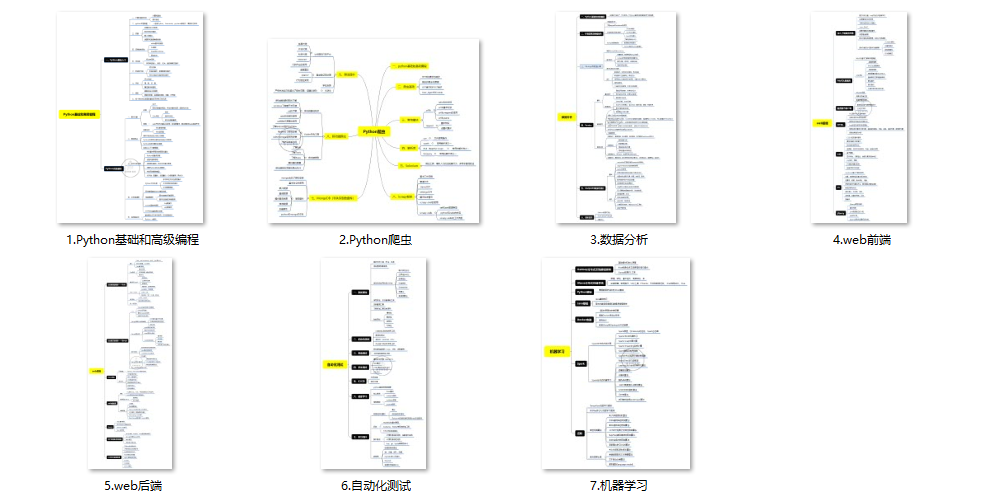还望各位大佬们多多指导、补充。
有什么python相关报错解答自己不会的、或者源码资料/模块安装/女装大佬精通技巧 都可以来这里:(https://jq.qq.com/?_wv=1027&k=dwzSWSBK)或者+V:python10010问我

日常的自用Python脚本没有太大的工程压力,
能紧跟更新步伐、尝试新的特性。
但是语法糖用的好就是效率提升,
用的不好就是可读性灾难,
有些语法的出现也伴随着种种的争议,
用更新的语法不代表能写出更好的代码。
通过语法的更新变化还有变化带来的争议,也能窥透语言的设计哲学、汇聚浓缩在一个特定点上的社区开发经验。选择合适自己的、保持对代码精简可读的追求才是最重要。
那么就从老到新,理一理那些有意思的小feature吧。可能有漏掉有趣的点、也可能有解释不到位的地方,欢迎各位大佬更正补充。
Python 3.0-3.6
PEP 3132 可迭代对象解包拓展
Python3.0引入,加强了原本的星号运算符(*),让星号运算符能够智能地展开可迭代对象。
python学习交流裙:660193417 ##3
>>> a, \*b, c = range(5)
>>> a
0
>>> c
4
>>> b
[1, 2, 3]
隐式赋值也同样适用
>>> for a, \*b in [(1, 2, 3), (4, 5, 6, 7)]:
>>> print(b)
[2, 3]
[5, 6, 7]
注意双星号(**)不能用相同语法展开字典
人畜无害,用处也不大的一个feature
PEP 465 矩阵乘法运算符
Python3.5引入,顾名思义,使用@符号。直接支持numpy、pandas等使用。
>>> a = numpy.array([1, 2, 3])
>>> b = numpy.array([10, 20, 30])
>>> a @ b
140
>>> c = numpy.array([[10, 15], [20, 25], [30, 35]])
>>> d = numpy.array([[4, 5, 6], [7, 8, 9]])
>>> c @ d
array([[145, 170, 195],
[255, 300, 345],
[365, 430, 495]])
矩阵乘法运算符的魔术方法为__matmul__()、rmatmul()、imatmul()三个;
本身用处不大,但是提供了一个额外的操作符使用空间,可以用来重载来进行类似距离计算之类的用途。
python学习交流裙:906715085##3
>>> from math import sqrt
>>> class Point:
>>> def \_\_init\_\_(self, x, y):
>>> self.x = x
>>> self.y = y
>>>
>>> def \_\_matmul\_\_(self, value):
>>> x_sub = self.x - value.x
>>> y_sub = self.y - value.y
>>> return sqrt(x_sub\*\*2 + y_sub\*\*2)
>>>
>>> a = Point(1, 3)
>>> b = Point(4, 7)
>>> print(a @ b)
5
争议主要存在于:作为矩阵乘法来说@操作符没有直观联系、影响可读性,不如直接使用matmul
PEP 3107/484/526 函数注解/类型提示/变量注解
Python3.0引入函数注解、3.5引入typing,让python也能享受静态类型的福利。可以说是py3中个人最喜欢的feature,使用简单、效果强大,直接让开发效率以及代码可维护性直线增长。
# 参数后加:即可标注类型,函数结构定义后接->即可标注返回类型
def get\_hello(name: str) -> str:
return f"Hello, {name}!"
如上进行标记之后IDE便能自动读取参数、返回类型,直接出联想爽快如java。
而PEP 484 Typing则是极大的扩充了类型定义语法,支持别名、泛型、Callable、Union等等。非常推荐直接阅读PEP。
下面就是一个泛型的例子
from typing import TypeVar, Iterable, Tuple
T = TypeVar('T', int, float, complex)
Vector = Iterable[Tuple[T, T]]
def inproduct(v: Vector[T]) -> T:
return sum(x\*y for x, y in v)
def dilate(v: Vector[T], scale: T) -> Vector[T]:
return ((x \* scale, y \* scale) for x, y in v)
vec = [] # type: Vector[float]
随后在3.6引入了众望所归的变量注解(PEP 526),
使用也很简单,直接在变量后添加冒号和类型即可,
搭配函数注解一起食用体验极佳
pi: float = 3.142
# 也同样支持Union等
from typing import Union
a: Union[float,None] =1.0
3.7中又引入了延迟标记求值(PEP 563),
让typing支持了前向引用、并减轻了标注对程序启动时间的影响,如虎添翼。
# 3.7前合法
class Tree:
def \_\_init\_\_(self, left: 'Tree', right: 'Tree'):
self.left = left
self.right = right
# 3.7前不合法、3.7后合法
class Tree:
def \_\_init\_\_(self, left: Tree, right: Tree):
self.left = left
self.right = right
静态类型检查对Python所带来的副作用主要还是启动时间上的影响,当然大部分场景所带来的便利是远大于这一副作用的。
PEP 498 f-string
Python3.6引入,应该是用的最多的feature之一了,但是看到很多代码里面还是str.format,就不得不再提一下。
>>> a = 10
>>> #只需要简单的在任意字符串字面量前加个f,就可以用花括号直接引用变量
>>> print(f"a = {a}")
a = 10
>>> # 格式化也很方便,使用:即可
>>> pi = 3.14159
>>> print(f"pi = {pi: .2f}")
pi = 3.14
也可以在表达式后接!s或者!r来选择用str()还是repr()方法转换为字符串。
基本就是str.format的语法糖。
在3.8版本以后,又增加了直接套表达式的功能,输出信息非常方便。
>>> theta = 30
>>> print(f'{theta=} {cos(radians(theta))=:.3f}')
theta=30 cos(radians(theta))=0.866
PEP 515 数值字面值下划线
Python3.6引入。输入太长的数字字面值怎么办?
>>> a = 123\_456\_789
>>> b = 123456789
>>> a == b
True
比较鸡肋…
Python 3.7
PEP 557 数据类Data Classes
提供了一个方便的dataclass类装饰器,直接上代码举例:
from dataclasses import dataclass
@dataclass
class InventoryItem:
name: str
unit_price: float
quantity_on_hand: int = 0
def total\_cost(self) -> float:
return self.unit_price \* self.quantity_on_hand
对这个例子,这个类会自动生成以下魔术方法
def \_\_init\_\_(self, name: str, unit_price: float, quantity_on_hand: int = 0) -> None:
self.name = name
self.unit_price = unit_price
self.quantity_on_hand = quantity_on_hand
def \_\_repr\_\_(self):
return f'InventoryItem(name={self.name!r}, unit\_price={self.unit\_price!r}, quantity\_on\_hand={self.quantity\_on\_hand!r})'
def \_\_eq\_\_(self, other):
if other.__class__ is self.__class__:
return (self.name, self.unit_price, self.quantity_on_hand) == (other.name, other.unit_price, other.quantity_on_hand)
return NotImplemented
def \_\_ne\_\_(self, other):
if other.__class__ is self.__class__:
return (self.name, self.unit_price, self.quantity_on_hand) != (other.name, other.unit_price, other.quantity_on_hand)
return NotImplemented
def \_\_lt\_\_(self, other):
if other.__class__ is self.__class__:
return (self.name, self.unit_price, self.quantity_on_hand) < (other.name, other.unit_price, other.quantity_on_hand)
return NotImplemented
def \_\_le\_\_(self, other):
if other.__class__ is self.__class__:
return (self.name, self.unit_price, self.quantity_on_hand) <= (other.name, other.unit_price, other.quantity_on_hand)
return NotImplemented
def \_\_gt\_\_(self, other):
if other.__class__ is self.__class__:
return (self.name, self.unit_price, self.quantity_on_hand) > (other.name, other.unit_price, other.quantity_on_hand)
return NotImplemented
def \_\_ge\_\_(self, other):
if other.__class__ is self.__class__:
return (self.name, self.unit_price, self.quantity_on_hand) >= (other.name, other.unit_price, other.quantity_on_hand)
return NotImplemented
这一条PEP也是比较有争议的,主要原因是Python其实已经内置了不少的类似模型:collection.namedtuple、typing.NamedTuple、attrs等 ;
但是这条PEP的提出还是为了保证方便地创建资料类的同时,保证静态类型检查,而已有的方案都不方便直接使用检查器。
Python 3.8
PEP 572 海象牙运算符

"逼走"了Guido van Rossum,最有争议的PEP之一。
首先引入了海象牙运算符:=,代表行内赋值。
# Before
while True:
command = input("> ");
if command == "quit":
break
print("You entered:", command)
# After
while (command := input("> ")) != "quit":
print("You entered:", command)
assignment expressions在进行分支判断时非常好用,
写的时候能够舒服很多。
本身使用也集中在if/while这种场景,虽然让语法变复杂了,
但是总体还是可控的,舒适程度大于风险。
海象运算符本身问题不大,但是争议主要存在于PEP 572的第二点,对于生成器语义的变化。
在PEP 572后,生成器的in后的运算顺序产生了变化,原本是作为生成器输入,结果现在变成了生成器闭包的一部分。
temp_list = ["abc","bcd"]
result_list = (x for x in range(len(temp_list)))
print(list(result_list))
# 等价于
# Before
temp_list = ["abc", "bcd"]
def func\_data(data: int):
for x in range(data):
yield x
result_list = func_data(len(temp_list))
print(list(result_list))
# After
temp_list = ["abc", "bcd"]
**(1)Python所有方向的学习路线(新版)**
这是我花了几天的时间去把Python所有方向的技术点做的整理,形成各个领域的知识点汇总,它的用处就在于,你可以按照上面的知识点去找对应的学习资源,保证自己学得较为全面。
最近我才对这些路线做了一下新的更新,知识体系更全面了。

**(2)Python学习视频**
包含了Python入门、爬虫、数据分析和web开发的学习视频,总共100多个,虽然没有那么全面,但是对于入门来说是没问题的,学完这些之后,你可以按照我上面的学习路线去网上找其他的知识资源进行进阶。

**(3)100多个练手项目**
我们在看视频学习的时候,不能光动眼动脑不动手,比较科学的学习方法是在理解之后运用它们,这时候练手项目就很适合了,只是里面的项目比较多,水平也是参差不齐,大家可以挑自己能做的项目去练练。

**网上学习资料一大堆,但如果学到的知识不成体系,遇到问题时只是浅尝辄止,不再深入研究,那么很难做到真正的技术提升。**
**[需要这份系统化学习资料的朋友,可以戳这里无偿获取](https://bbs.csdn.net/topics/618317507)**
**一个人可以走的很快,但一群人才能走的更远!不论你是正从事IT行业的老鸟或是对IT行业感兴趣的新人,都欢迎加入我们的的圈子(技术交流、学习资源、职场吐槽、大厂内推、面试辅导),让我们一起学习成长!**
























 2024
2024

 被折叠的 条评论
为什么被折叠?
被折叠的 条评论
为什么被折叠?








